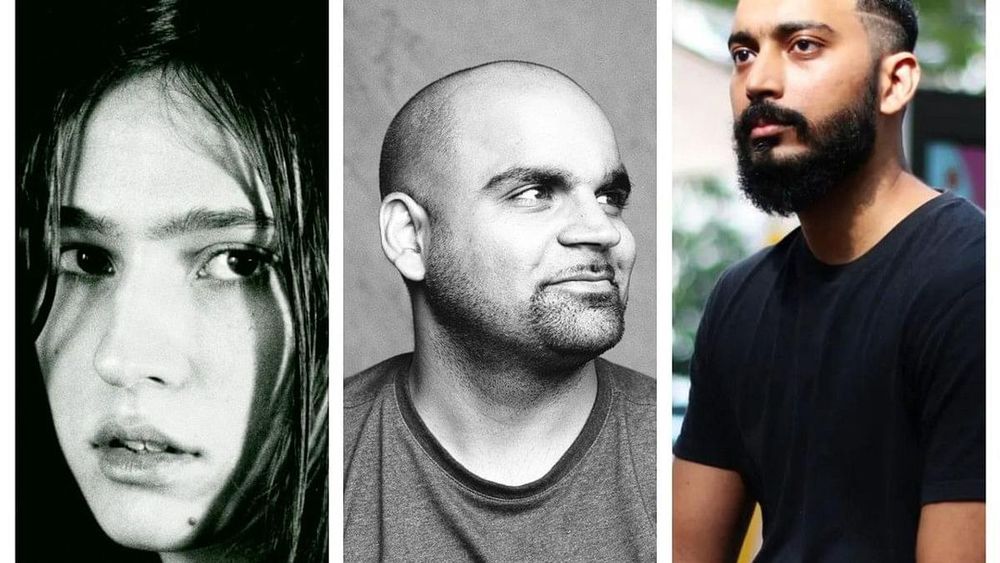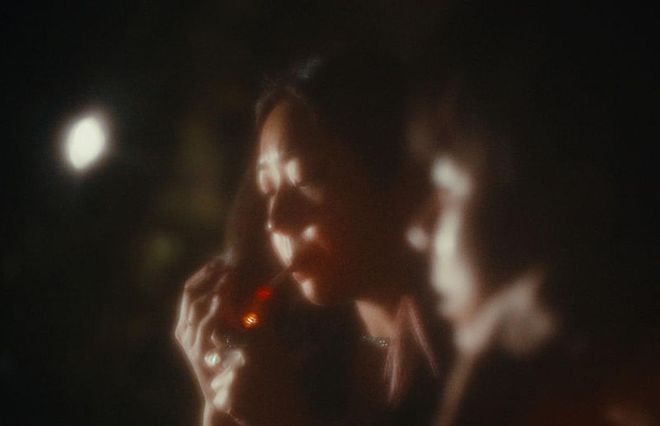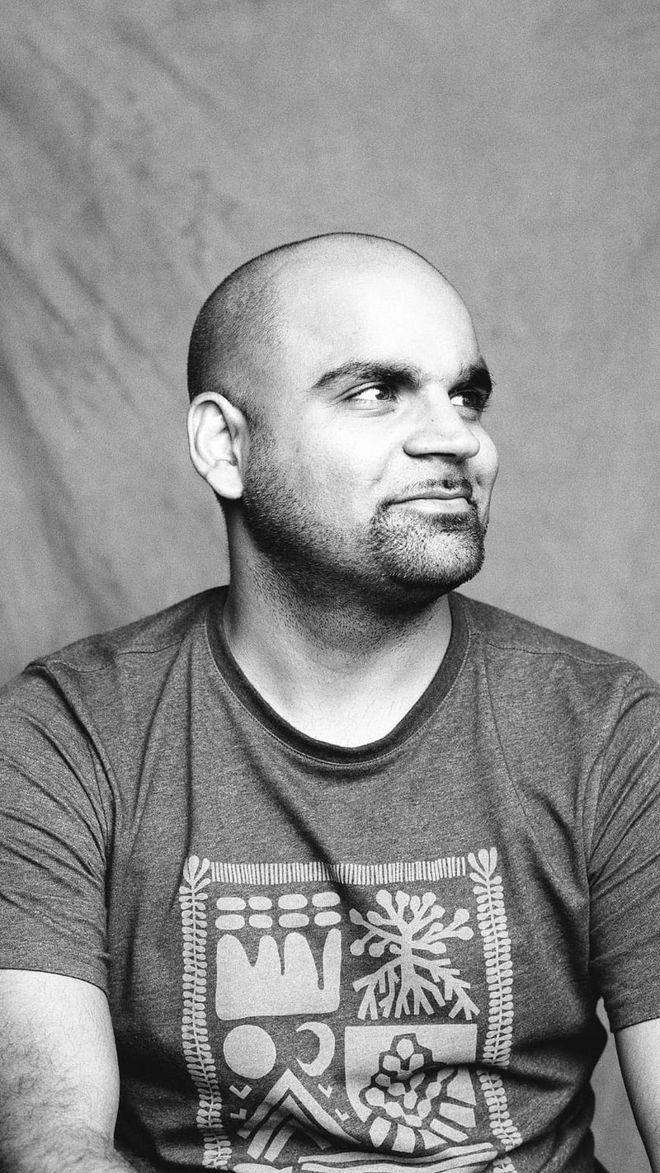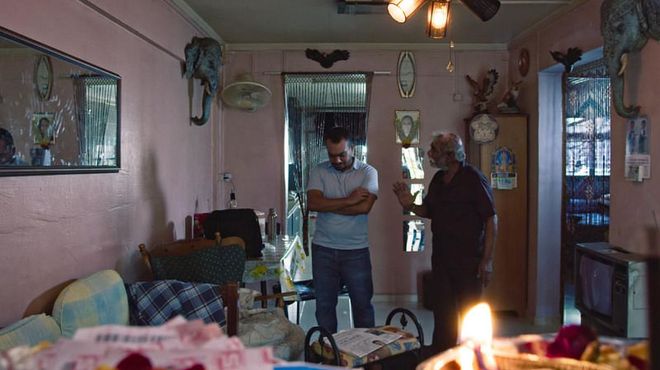Rising Local Stars Dominate 2022 Singapore International Film Festival Lineup
The festival will run from 24 November to 4 December

There's something for everyone at this year's edition of the Singapore International Film Festival, and absolutely no shortage of home-grown movies to choose from. Hefty topics ranging from motherhood to critical illness are just a small sample of the inspirations local filmmakers drew on to craft this year's incredible lineup of movies, many of which have already garnered wide acclaim at other festivals around the globe. Below, BAZAAR speaks with three directors behind some of this year's most widely-anticipated films: Adelaide Sherry, Anshul Tiwari and Viknesh Silva, all of whom have movies making their world premiere at SGIFF.
Adelaide Sherry

Photo: Courtesy of SGIFF
Adelaide Sherry
What are your thoughts on Singapore’s film industry? What was it like developing your craft as a filmmaker here?
I think as a whole, Singapore’s independent film industry is still developing, and many films that I’ve seen from Singapore cinema seem too tied down and bound to local culture and context. However, more interesting and unique projects that transcend that barrier are slowly starting to emerge here which is very encouraging, most recently with Royston Tan’s 24, and films being released in the future, such as Yeo Siew Hua’s Stranger Eyes. Short films being produced here are also increasingly creative and unique, with a larger output every year. Moving forward, in order to encourage continued growth and innovation in the film industry, there needs to be more support, and a space created for upcoming filmmakers to experiment and evolve their creative vision with less restraint.
Developing my craft as a filmmaker here has been similar to the experience of filmmakers everywhere else in the world, since it’s really down to the art you consume and the films you make. However, one thing that has really helped is the accessibility of film gear through some local universities and schools, which made it easier and more spontaneous to just rent gear for free and shoot, rather than having to plan a shoot strictly around expensive and time-limited rental gear. On the downside though, there is starting to be a lack of interesting and naturalistic locations. With more of these natural and distinctive locations being reclaimed or redeveloped, it makes it harder to find unique places to film and create stories.
Some great regular film programmes by places such as the Asian Film Archive and The Projector have also made it easier to explore and discover rarer works in a cinema setting. For example, the screening of Sátántangó in 2021 by SIFA (Singapore International Festival of Arts) was such a rare opportunity that is hard to find anywhere else, and actually changed how I viewed the art form. Especially with slower cinema, the big screen makes films extremely evocative and almost meditative, something that can't be felt when watching at home. Being able to experience and understand that helped me further navigate what I wanted to achieve with my craft.

A still from Adelaide Sherry's Seance of the Past. Photo: Courtesy of SGIFF
Seance of the Past
You favour a surreal, avant-garde form of storytelling. How did you form this identity as a filmmaker, and what draws you to this particular style?
I grew up playing a lot of classical music, so my approach to filmmaking has always been rooted in a very music-like flow, as that was my first introduction to art. I've also always been drawn to vibrant, saturated colours and impressionistic art, both of which have bled into the films that I make. Shoegaze, dream-pop, and ambient music have informed the mood and style of my filmmaking too. So instead of thinking of film from a more narrative and traditional standpoint, I’ve always viewed the art form in a more lyrical and musical way, where the emotive reactions, visceral images and sound, and the flow of the film are prioritised.
A large part of figuring out my own film language and identity was also through watching lots of films and understanding the medium. Letterboxd was a tremendous help in the sense that I was able to find and categorise the films that matched what I was looking for - for example, films that feel like shoegaze, or films that are more impressionistic, which wouldn’t have been possible from simple Google searches. The website also made it much easier to find rarer works - even art installations, that would otherwise have remained unknown to me. I could then see what had already been achieved stylistically and narratively by other filmmakers and build on that myself. Most recently, I discovered both A Tale from Heaven by Phuttiphong Aroonpheng, and Alexandre Larose’s art installations and short films - like his Broulliard series, which blew me away with the impressionistic tone and art.
My style also developed through years of experimentation and filming, which helped me navigate and understand which direction and style felt right and intuitive to me as a filmmaker. Seance of the Past and my upcoming feature are some of those experiments.
Tell us more about your film Seance of the Past, making its world premiere at SGIFF. The trailer doesn’t reveal too much info!
It’s an abstract mood piece, that centers on a person who is unable to move on from loss and their past. However, besides the official synopsis, I don’t want to reveal too much about the film’s plot because it’s very minimal and vague. The trailer itself is meant to reveal the mood of the short film rather than the story, and I’d prefer to let the audience watch and interpret the film for themselves!
Anshul Tiwari

Photo: Courtesy of SGIFF
Anshul Tiwari
Tell us more about your journey in the film industry. Why did you want to become a director?
My work in film started as a documentary filmmaker. At first, film was a means to express and connect. But then it became something to understand the world and find myself in it. I was looking for myself in the films I saw and the stories I read. My love for film started with Guide (directed by Vijay Anand), which I watched as a 10-year-old to stave off boredom over an Indian summer. I was smitten by a love for cinema and a deep longing to inhabit its universe, although I didn't know it at the time. Then, during my later years, I watched Paather Panchali (directed by Satyajit Ray) and 400 blows (directed by Francois Truffaut), shortly after one another. Both films cast their spell on me and I began to seek ways to make films.
I didn't receive any film education until I made my first two short films, which I later trashed. They were fiascos. One day, I was editing my film when a stranger walked in and exclaimed, "Wow, that looks magical!" He left soon after and the matter was forgotten. But it left its impression on me. I knew I could do this. My film education happened through making films. I made mistakes, followed my instincts and remained curious during my formative years. Later, I developed strong beliefs to tell stories through my writing and poetry. That was the seed of my short film - WABI SABI - reflections on the incomplete life through poetry and reminiscence. I was moved by Japanese cinema and loved the simplicity and genius of [Yasujiro] Ozu. I called him my guru at the time. His stories created the same atmosphere in my head which I experienced while reading Hindi literature from India. I told myself, "that is what I want to create in film, that atmosphere in my head that I could see so clearly."
You’ve spent time across India and Singapore throughout your life - how have these two places shaped your filmmaker identity and your work?
I often joke about India and Singapore. India is my mother. Singapore is my partner. Both have nourished me, inspired me, punished me, and cared for me. My early years in India were spent in small towns, villages, long train journeys, and family gatherings over death and marriage. I come from a large family with ancestry that have lived on their land in central India for centuries. I am the first generation to fly off to foreign lands. My film career had already started before I arrived in Singapore and coming to Singapore was less daunting than I feared. The Indian community in Singapore became my first refuge and my work as a documentary filmmaker offered me a unique fortune to connect with Singapore's diverse culture. When we were rehearsing for SUGEE CAKE, my Eurasian cast members shared many stories of their childhood and they were uncannily similar to my own. My first brush with Hokkien came while creating DEAR NEW NEIGHBOUR, where I worked with one of the Chinese Singaporean cast members to craft Hokkien dialogue. Her sense of humour reminded me of my aunt from back home.
Then, later when I missed my mother during COVID, I found myself loving two aunties from Whampoa, with whom we created a short film on dementia. One of the aunties had the exact same morning routine as my mother and the same dainty lurch in the neck when she listened. Indian cinema has a long and illustrious history, which goes above and beyond Bollywood. But even more vast and deep is its literature and poetry. I draw inspiration and stories from this vast ocean. Singapore is the gateway to Southeast Asia and its ancient roots. But it hides its secrets from outsiders and travelers. Only when you tend this soil patiently, and stop to listen in its corners, does it begin to breathe its stories to you. Singapore's film scene is refreshingly current, with access to world-class tools and resources. With the rise of our local filmmakers to the world stage, Singapore's independent cinema has found a new confidence and voice.

Gauraangi Chopra and Namita Lal in Before Life After Death. Photo: Courtesy of SGIFF
Before Life After Death
Before Life After Death will be making its world premiere at SGIFF. It looks like it’ll be an emotional watch, documenting the unlikely relationship between a rebellious female student and her gynaecologist. Can you tell us what inspired the film? And what messages are you trying to get across?
BEFORE LIFE AFTER DEATH is the distillation of my sharp, pungent, soul-shaking and sometimes darkly funny life experiences that came together in this story penned by the renowned graphic novelist and film's co-producer, Debasmita Dasgupta. She started with the story of a destitute woman facing an unwanted pregnancy in Singapore and her deep longing for love and family, and how another woman who is leading a vastly different and apparently privileged life, comes in her life. As the characters grew, she added many layers and the story became what it is today, with key themes of sisterhood, freedom of choice for women, suicide and mental health. Debasmita’s narration was visual, almost tactile, I could see the story before my eyes.
With my documentary filmmaking experiences in Singapore, I had met each of its characters or knew someone I could draw inspiration from. When we thought of Gauri (played by Gauraangi Chopra), we asked ourselves, can a woman facing unwanted pregnancy choose a career and a baby together in Singapore? If not, then, why not? And what happens when she makes that choice? Will she be thrown into more poverty or does motherhood help her tap into an inner power she didn't know she had? When we thought of Radhika (played by Namita Lal), we asked ourselves, how does it feel to be misunderstood? How does it feel to live in guilt? Can someone who helps thousands of women with motherhood be torn by her own motherhood? The more we thought on these questions, the more we began to include them in our story. In this story, no one wins a trophy for doing the right thing. There are no happy marriages, or reconciliation of guilt or grief that follows. I am not looking to send a message in this film. I am just asking questions. If audiences accept these questions, they will find their message.
What excites you about SGIFF and the future of Singapore’s film industry? Any movies you’re excited to see?
I love that SGIFF has become a force in Asia that wants cinephiles to re-imagine the world where cinemas of Asia and the world stand equally side by side. For far too long, directors have looked for approval from a major European or North American film festival to even call themselves filmmakers. SGIFF is trying to change that notion for Asian filmmakers or filmmakers from underrepresented corners of the world. Perhaps, I should take back my words and say that SGIFF has already changed that notion for many filmmakers. SGIFF brings our worlds together. We filmmakers feel loved and cared for by a group of cinema lovers who look beyond filmmakers' track record and nationality to represent their voice. My SGIFF watch list includes a wide selection, but I am really keen on Assault, Autobiography, Convenience Store, Nezouh and Singapore Panorama shorts like Breaking News, Mothers, and The Feeling of Being Close to You. I really wanted to watch Geylang, but I will have to miss it this time.
Viknesh Silva

Photo: Courtesy of SGIFF
Viknesh Silva
You’ve been passionate about storytelling since you were a kid. What prompted your decision to venture into film after being a TV director for so many years? What’s different about storytelling through these two mediums?
I have been directing and producing shorts films, with the aim of breaking into the TV industry. The films that I make represent my style of filmmaking. Different people can tell the same story in different ways. And that is what identifies them as a filmmaker and an auteur. Producing your own short films enables you to do that. You work on something close to your heart. I do freelance editing for TV channels and various roles, and realise that the TV industry caters to the commercial audience. It’s a fast-paced industry with tight deadlines. It’s challenging as you must balance time and your influence/style in the craft.
You also spent time studying abroad to hone your craft. What was it like representing Singapore on a global stage? On the other hand, how did that global experience help further inform your identity as a filmmaker?
Singapore is seen as a financial hub. So, people like myself going out to the world shows an immense growth in the filmmaking industry. Studying abroad has allowed me to immerse myself in a wider expansive film culture that is informed by a diverse array of perspectives. I really enjoyed the learning experiences at various film festivals. I watched unique films and understood the importance of having a distinctive voice. After which I came to the realization of the kind of stories that I want to tell.

A still from Viknesh Silva's Altar. Photo: Courtesy of SGIFF
Altar
Altar is making its world premiere at SGIFF, but it’s already racked up all sorts of awards. Tell us more about what went into brainstorming and producing that film. How does it feel getting all this positive reception?
Altar was an experiment. Like I mentioned before, a story can be told in different ways. A story like Altar isn't uncommon. Yet it was something close to my heart. My uncle shared a similar fate to the protagonist of the film. So, I decided to make this film in an unconventional way to get my audience's attention. I planned to make this film from the perspective of an altar or a shrine. Furthermore, the film had various abrupt jump cuts and overlays which weren’t normal. I knew this was either going to be a hit or miss. I was afraid people would not understand the reason for me making it this way or maybe even finding it boring. So, I was glad when I heard rave reviews from audiences from different ages and walks of life. I also learned a lot from making this film in this manner. I realised that if done with reason to complement the core story and the ability to have your characters impact your audience, then anything is possible.
What excites you about SGIFF and the future of Singapore’s film industry? Any movies you’re excited to see?
I think what really excites me is that I get to meet like-minded people, get to know their path to filmmaking and get inspired to do more films. I feel that there is a lot of love for films in Singapore and SGIFF has been a great advocate for showcasing them, connecting one another and celebrating this art form. I love the mix of thrillers and untold stories; therefore I am looking forward to watching Geylang by Boi Kwong. The other films would be Joyland by Saim Sadiq and the short films in the Singapore Panorama section.
For more information on tickets and what to look out for at SGIFF this year, visit the official website sgiff.com.